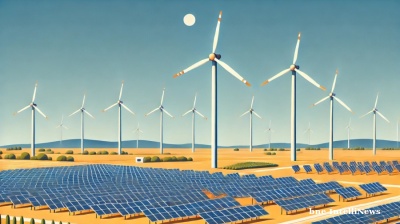The cost of joining the global movement towards net zero is not yet fully known, and both governments and corporations with the highest levels of both greenhouse gas (GHG) emissions and energy intensity face the highest costs for carbon.
This threatens to put then at a competitive disadvantage, as they have to include the cost of carbon in both their budgets and in their environmental, social and government (ESG) reputation.
However, not all governments have set carbon prices, while the EU has proposed putting a carbon price on imports of the most carbon-intensive products, such as steel, cement and aluminium, not just on domestic production.
Prices
The International High-Level Commission on Carbon Prices, a coalition of governments and experts supported by the World Bank, recommends that the price of emissions should be between $40 and $80 per tonne by 2020, and $50 to $100 per tonne by 2030. Meanwhile, carbon prices on the EU ETS currently stand at around €52.
Meanwhile, the IMF said this week that carbon prices should rise to $75, $50 and $25 respectively for advanced, high and low-income emerging markets.
It claimed that this would achieve a 23% reduction in global emissions by 2030, enough to bring emissions in line with keeping global warming below 2°C, as called for by the Paris Agreement.
The EU’s Green Deal is set to make producers of steel, cement, fertiliser and aluminium that export to the EU pay for carbon credits through its proposed Carbon Border Adjustment Mechanism (CBAM).
The CBAM aims to make exporters to the EU pay a similar price for carbon as domestic producers.
Leaked drafts of the CBAM rules state that the price EU importers must pay for imported goods, such as Russian steel, would be the same as the price of EU ETS allowances. Importers would need report the carbon content on their imports to a new CBAM Authority.
The CBAM could be introduced in a transitional phase from 2023, with a full roll-out from 2026.
Russia
Russia is especially exposed to new carbon costs in the EU, as it is one of the biggest energy-intensive exporters to the EU, with exports of fertiliser, aluminium, steel, electricity and cement worth $9.5bn in 2019, according to Deloitte.
Early estimates of the cost of CBAM credits range from $3bn per year, from the Russian Natural Resources Ministry, to a total of $60bn between 2022 and 2030 from KPMG.
The highest estimate puts the cost to Russian exporters at €6bn ($7.2bn) per year, Platts reported on April 22.
For just steel, a tax of €60 per tonne would cost $780-800mn per year for Russia’s steel exports to Europe, which stand at 13mn tonnes per year (tpy) and are worth $7bn, Russian Industry and Trade Deputy Minister Viktor Evtukhov said in November.
As such, the playing field for Russian exporters seems to be sloping towards them as they lose any competitive advantage with EU producers, which must pay for carbon through the EU ETS.
Ukraine
Meanwhile, Ukraine has put in a place a carbon tax, although at just UAH10.0 ($0.40) per tonne it is derisory and is one of the lowest in the world.
Ukraine has a 2050 Green Energy Transition Concept, which aims to meet the objectives of the European Green Deal. However, it admits that the country could only become climate neutral by 2070.
The country’s GDP to energy and carbon consumption ratios are still extremely high compared with not only those of OECD members (three times greater) but also neighbouring Eastern European countries, the concept says.
Turkey
For Turkey, iron, steel and cement production could be affected, with the CBAM costing Turkey’s manufacturing sector an additional €1.08bn per year, according to the Turkish Industry and Business Association (TUSIAD).
The country currently does not have a carbon price, although there are voluntary schemes.
However, a recent briefing from the European Council on Foreign Relations highlighted how the Green Deal could foster better relations between Brussels and Ankara.
Relations could improve if the EU helps Turkey to adjust to the European Green Deal and the climate challenge more broadly.
The briefing highlighted how EU and Turkey are at different levels of preparedness for the transition away from a carbon-based economy. Yet a new agreement on climate change could develop a better framework of rules governing relations between the two while also maintaining Turkish industry’s competitive advantage in the European marketplace.
Steel
The threat of carbon prices is spurring corporations to invest in green production, such as using green hydrogen as a fuel to manufacture steel, or green ammonia to produce fertiliser.
Green here means using electricity from solar and wind to power new methods of production, such as electrolysis for hydrogen, rather than more traditional sources of power such as fossil fuels.
One option to avoiding paying for carbon credits is to use green fuel such as hydrogen.
Thyssenkrupp recently said it aimed to produce 3mn tonnes of green steel by 2030 to curb CO2 emissions by 30% and aimed to invest €2bn in green steel.
However, this could only be done if it received free CO2 certificates from the EU’s Emissions Trading Scheme (ETS).
"With every tonne of hydrogen that is used in steel production, we avoid 26 tonnes of CO2. But our investment cycles are long. 2030 basically means for us tomorrow, that's why we need to start now," said Thyssenkrupp chairman Bernhard Osburg.
Cement
EU cement producers are keen that the CBAM makes their non-EU competitors face similar carbon costs.
Trade body CEMBUREAU said that the scheme, which is labelled “complex and untested,” must ensure a fully comparable CO2 cost basis, covering both direct and indirect emissions, between EU and non-EU cement suppliers so that carbon leakage protection is not weakened.
It also wants current allocations of free EU ETS credits to stay in place until 2030.
Conclusion
Put simply, the EU is looking to put a carbon price on imports into the bloc.
While Brussels says it is pursuing environmental aims, it is being careful to make it WTO compatible, which means avoiding any trade war with the likes of Russia and Turkey.
Russia has already complained that the launch of the CBAM in July effectively amounts to a trade war.
The CBAM is vulnerable to being tested at the WTO, as exporters to the EU have dubbed it an unfair tariff, rather than any kind of pricing mechanism trying to reduce CO2 emissions.
bneGREEN

Global renewables to double by 2030, but IEA warns momentum must accelerate
Global renewable energy capacity is on course to double by 2030, reaching 4,600 GW—comparable to the current combined total of China, the European Union and Japan—according to the International Energy Agency’s Renewables 2025 report.

South Korea’s embrace of SMRs as a pillar of nuclear policy
Spearheaded by Korea Hydro & Nuclear Power, these compact reactors are increasingly being seen as central to the nation's energy policy, offering flexibility, scalability, and ultimately a pathway to carbon neutrality

China leads global energy export race as clean tech shipments hit record highs
China is outpacing the US in the global race to dominate energy exports, as demand for clean technology surges and fossil fuel revenues plateau. China exported $120bn in green technology through July 2025, surpassing the US' oil and gas exports.

Philippines sets out policy framework for first nuclear power plant
The initiative marks a significant step in reviving the Philippines’ long-dormant nuclear ambitions. Following the 1973 oil crisis, the country constructed the 621 MWe Bataan Nuclear Power Plant in 1984 at a cost of $460mn – around $1.4bn today.
_Cropped_1759915420.jpg)



